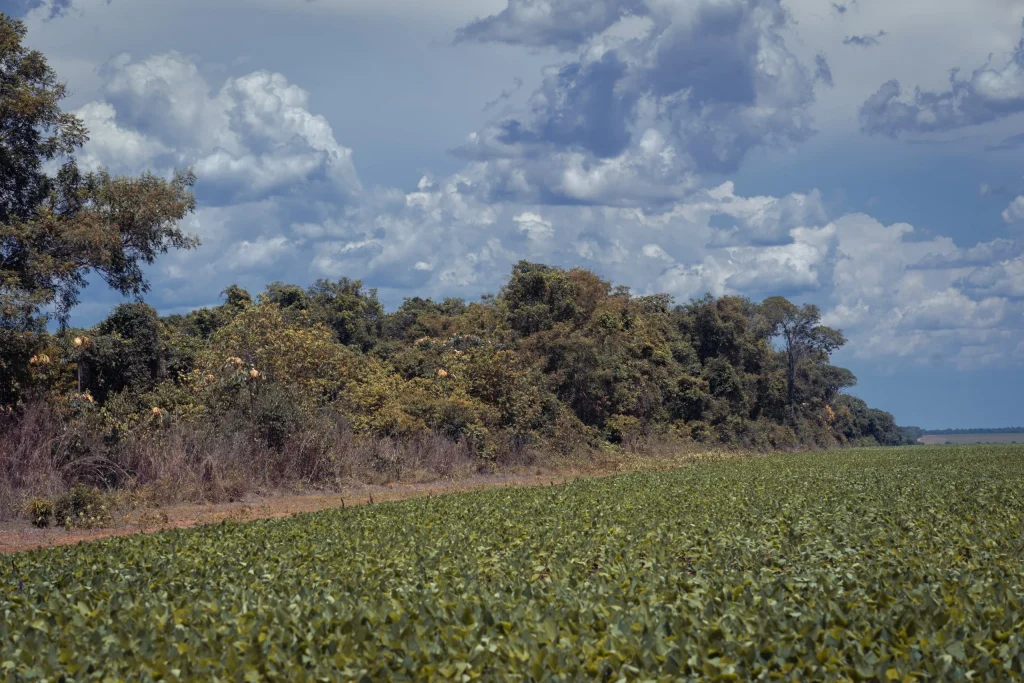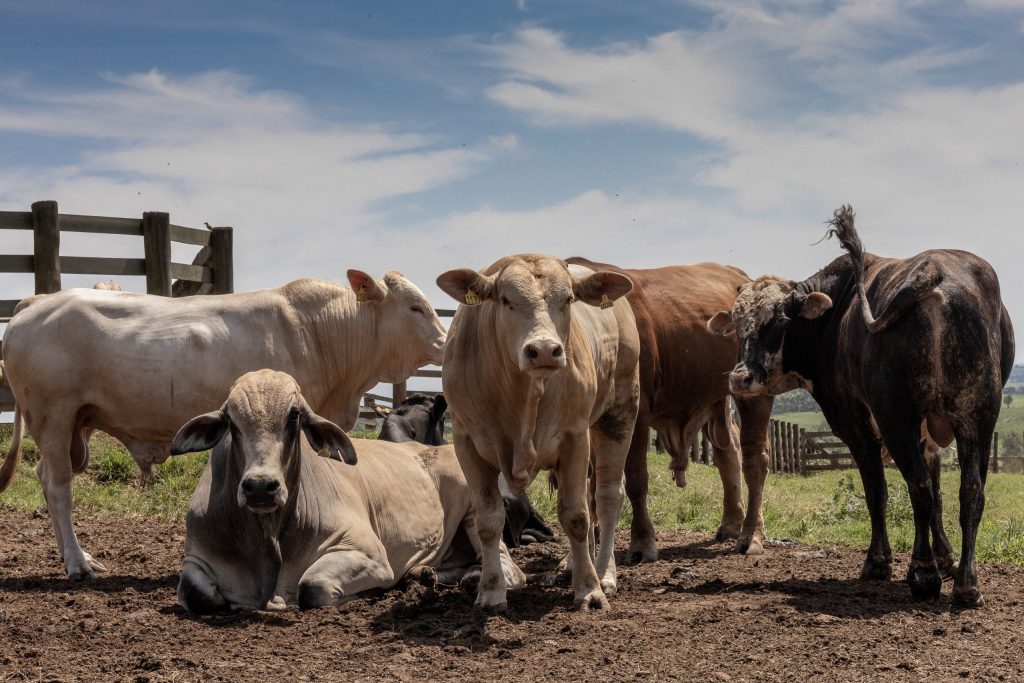The trade dispute between the United States and China is weakening the US position in the Chinese market. Tariffs of more than 200% and mutual retaliation are also fuelling expectations that Brazilian agribusiness will expand exports to China, while environmentalists warn of increased pressure on forest areas.
Products such as soy, corn, cotton, beef and chicken have the greatest potential for immediate demand growth, say experts. Having already consolidated its position in these markets, Brazil has a competitive advantage, especially given the possibility of a record grain harvest this year.
“Growth could be significant in the short term,” Camila Amigo, international analyst at the Brazil-China Business Council (CEBC), tells Dialogue Earth. “This has already happened in previous moments of the trade war, especially between 2018 and 2019.”
At that time, US President Donald Trump’s first administration increased tariffs on several countries, especially China, which retaliated. The confrontation affected global production chains and Brazil benefitted by taking over most of the US soy market in China, according to the US Department of Agriculture.
Now, newly increased foreign demand could raise Brazilian food prices, which have been rising faster than general inflation since the Covid-19 pandemic. Brazil’s logistical infrastructure for transporting grain, such as its ports, roads and railways, already has bottlenecks and could face congestion as exports increase, raising freight costs.
In addition, peaks in foreign demand for Brazilian agricultural commodities have historically also led to increased deforestation, especially in the Cerrado and the Amazon, according to Paulo Barreto, a researcher at the Amazon Institute for People and the Environment (Imazon). “If current conditions continue, if there is more demand, there will tend to be more deforestation again,” he says.
Studies and analysts indicate, for example, that Amazon deforestation jumped between 1995 and 2004 as Brazil’s agricultural areas and cattle population expanded to meet growing international demand for soy and beef.

Brazil already leads in the Chinese market
Tensions between the United States and China began to rise in 2017, during Donald Trump’s first term in office, with the conflict coming to a head in 2018 as the two countries announced a range of tariffs upon each other’s goods. That year, in response to US measures, China imposed a 25% tariff on 106 American products.
Trade disputes simmered with the signing of a tentative agreement between Washington and Beijing in 2020, followed by a shift in political focus after Joe Biden took office the following year. Still, his administration largely upheld most Trump-era tariffs, and even increased rates on some Chinese products. Trump’s return to the presidency in 2025 has since reignited the conflict on a new scale.
Between 2020 and 2024, the United States managed to recover part of its soybean and beef exports to China. However, Brazil had already filled the gap left during the height of the trade war and consolidated its lead in the Chinese market.
In 2018, Brazil overtook the US to become China’s top agricultural supplier, shipping a total of USD 37 billion in goods, according to a study published this year by research institute Insper Agro Global.
Although other factors may have had an influence, shipments of Brazilian meat and soy to China grew significantly between 2016 – before the Trump administration’s disputes – and 2024, according to foreign trade data from the Brazilian government. Meat exports to China in that period increased eightfold, from 165,000 to 1.32 million tonnes, while soy sales increased by 88%.
Analysts believe the tariffs will cause Brazilian exports to grow less this time around, due to Brazil’s already consolidated position in the Chinese market. “The impact of this trade war on Brazil will not be as great as under the first Trump administration,” says Camila Amigo.
No one knows how long the trade war will continue, however. The US has been stepping up its pressure and China has signalled it will not let up. Even so, representatives of the Brazilian agricultural sector believe the advantage will not last.
“The comparative advantage is very short term… We can’t think we’re going to take away the US market in China,” says Ingo Plöger, vice-president of the Brazilian Agribusiness Association. “China knows where it can hit the United States and is already acting on it, and the United States also knows where it is limiting China. The countries will end up sitting down to negotiate and reach an agreement.”
Greater beef demand could mean more pastures
Around 90% of deforestation in the Brazilian Amazon occurs to open up pastures, according to Imazon. Although 70% of the beef produced in Brazil is destined for the domestic market, the sudden increase in demand raises the risk of small and medium-sized producers expanding their areas irregularly, according to Niklas Weins, assistant professor at Xi’an Jiaotong-Liverpool University.
“The expansion of the agricultural frontier is often linked to violence and the invasion of Indigenous or quilombola lands,” says Weins, the latter referring to descendants of Afro-Brazilian communities established by escaped slaves.
Today, Brazil exports meat to China from steers that are less than 30 months old, with strict health controls. However, the strict requirements on this so-called “boi China” – beef that meets the necessary Chinese standards – do not include environmental criteria. As such, cattle may be raised in areas of illegal deforestation.

Strong demand from China for beef has also been seen to put pressure on the Brazilian market by raising prices, encouraging livestock expansion, early slaughter and, in many cases, the advance of cattle into forest areas.
“The additional demand pushes some people to deforest,” says Barreto of Imazon. “Even if they’re not exporting to China, people start deforesting to meet domestic demand.”
Niklas Weins emphasises that the recent weakening of Brazil’s currency, the real, makes its exports even more competitive. In the first week following Trump’s announcement of so-called “reciprocal” tariffs on around 90 trading partners on 2 April, the market reacted with a boost for the dollar and a general fall in other currencies. In the first days of the month, the Brazilian real depreciated by 5.1%, the third highest rate in the world. “This will probably have a direct effect on food prices,” he adds.
Light and danger at the end of the tunnel
On the other hand, public policies aimed at sustainable agricultural expansion are also gaining momentum, according to Nathália Teles. She works on monitoring Brazil’s pastures at the Remote Sensing and Geoprocessing Laboratory of the Federal University of Goiás. Teles cites ways to encourage production in areas that are already open and underused. These are the ABC+ Plan – a national strategy to promote low-carbon agriculture – and the National Programme for the Conversion of Degraded Pastures, as well as the use of monitoring technologies.
“Deforestation is becoming less and less economically viable,” says Teles. “There is greater supervision and legal restrictions, as well as a high environmental and climate cost.”
However, there are still institutional gaps that increase the Amazon’s vulnerability to deforestation, says Paulo Barreto. These include the large extent of public lands not yet designated as protected or belonging to a group – a situation that encourages illegal occupation and speculation. They also include the absence of an effective cattle-tracking system, and inconsistent actions by public authorities.
The federal government has postponed crucial measures, such as regulating tracking and protecting undesignated public forests. In addition, rural credit policies allow finance to reach producers linked to deforestation. Even institutions like the Brazilian Development Bank (Bndes), a shareholder in large meatpacking companies like JBS, have failed to control environmental risks, says Barreto. When contacted by Dialogue Earth, the Ministry of Agriculture did not reply to requests for comment.
Barreto says that deforestation is driven in part by flaws in public policies and the lack of requirements that Chinese beef be traceable. He says this has a solution: “If China adds an environmental demand to the requirements of the China beef, this could have positive effects, stimulating a more sustainable use of pastures without the need for deforestation.”




